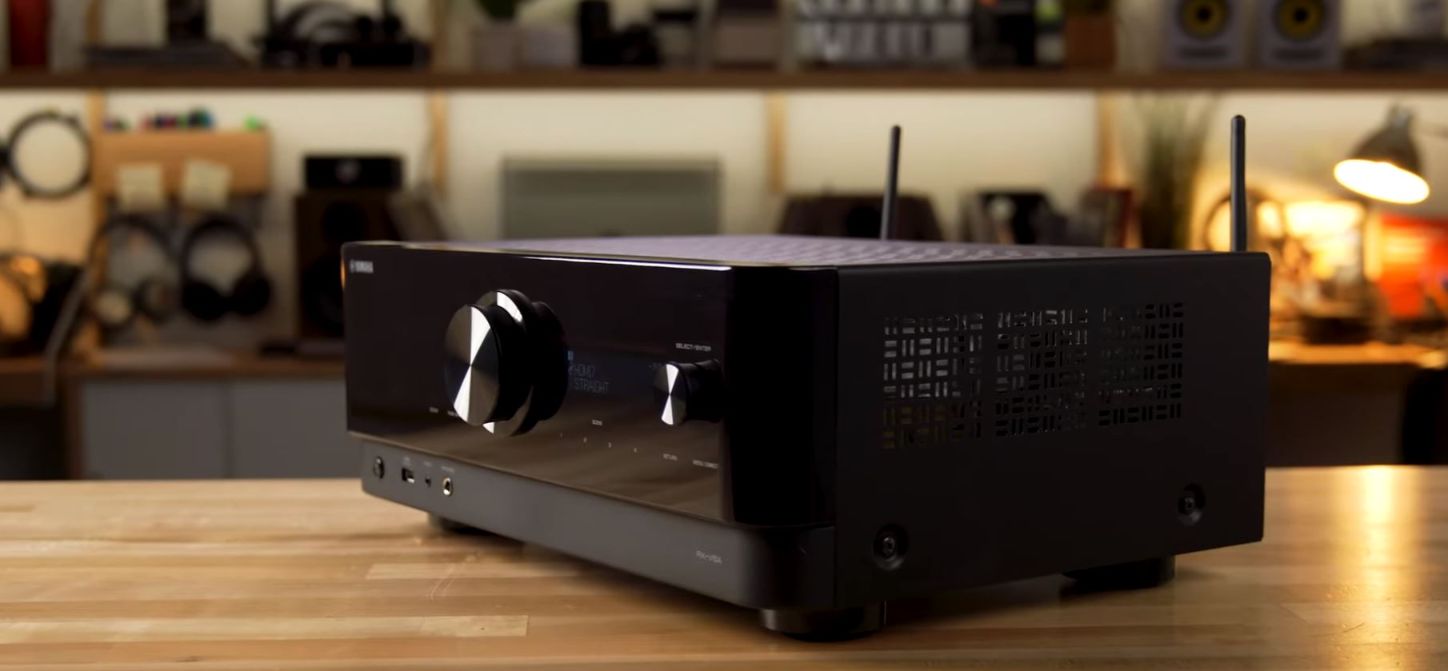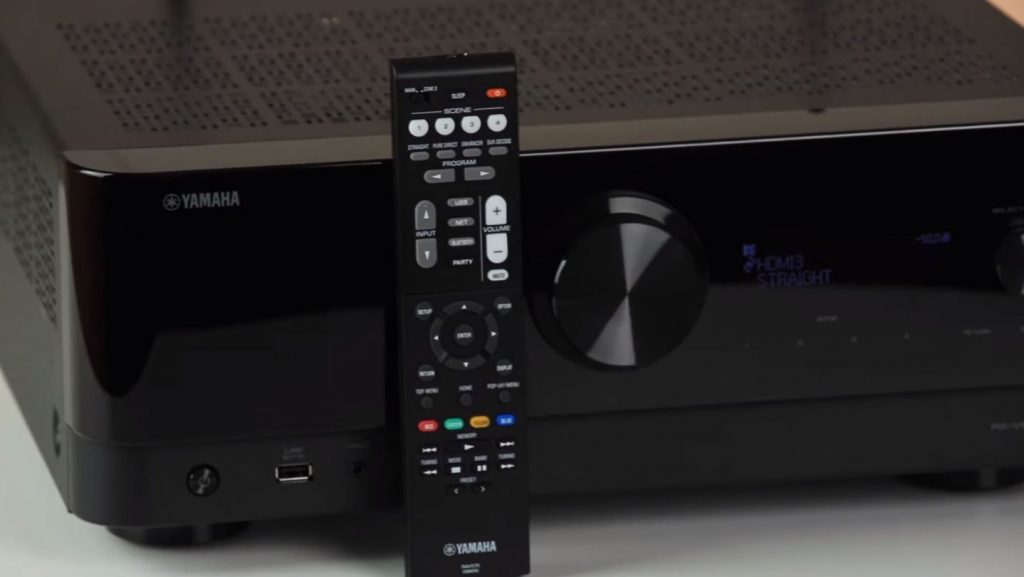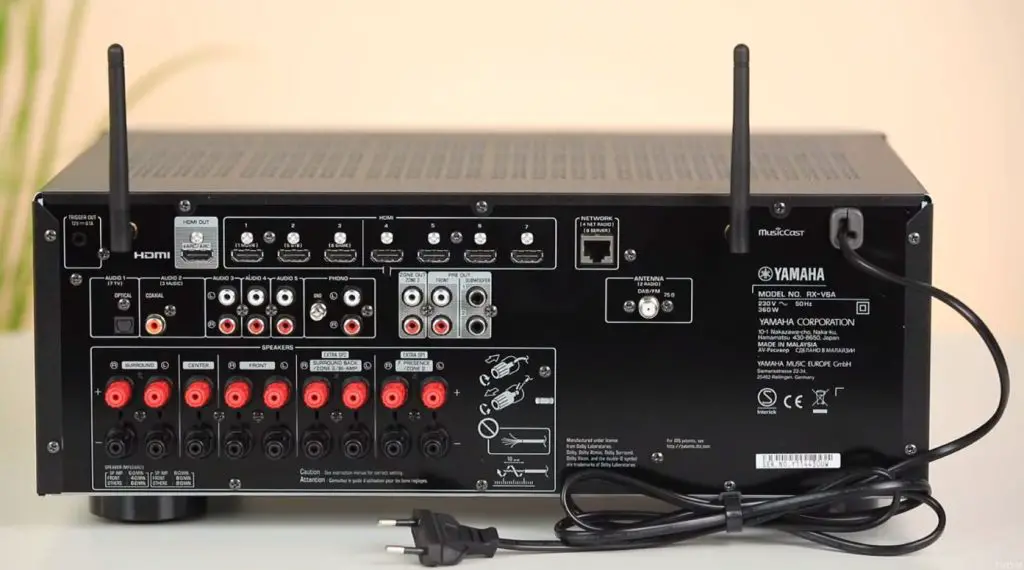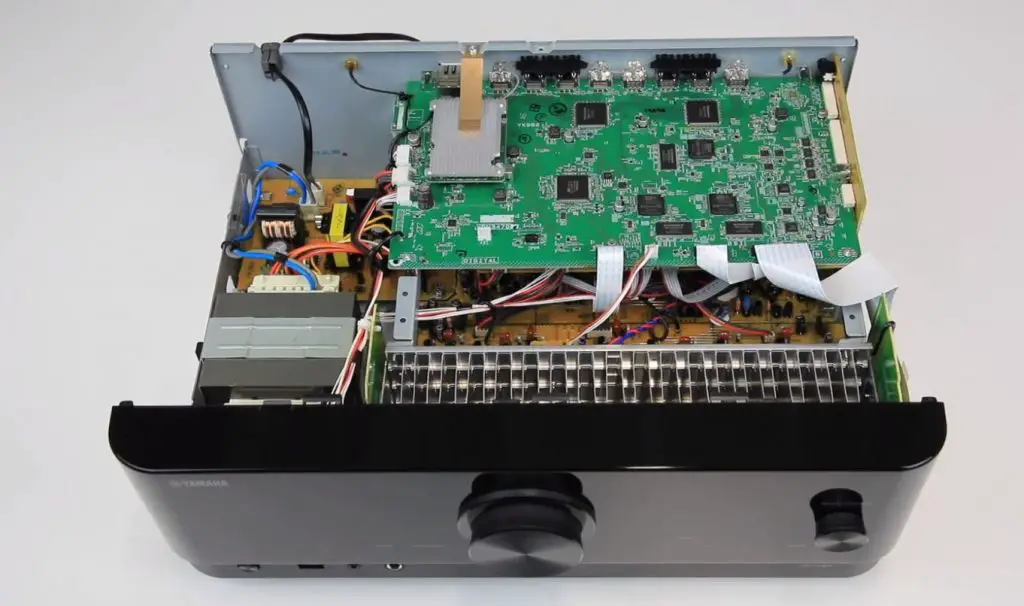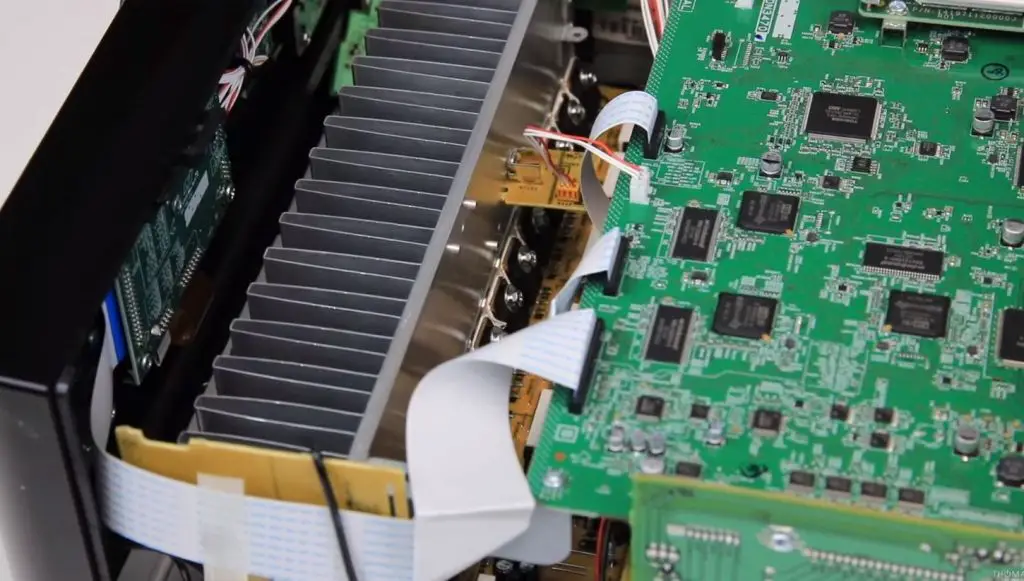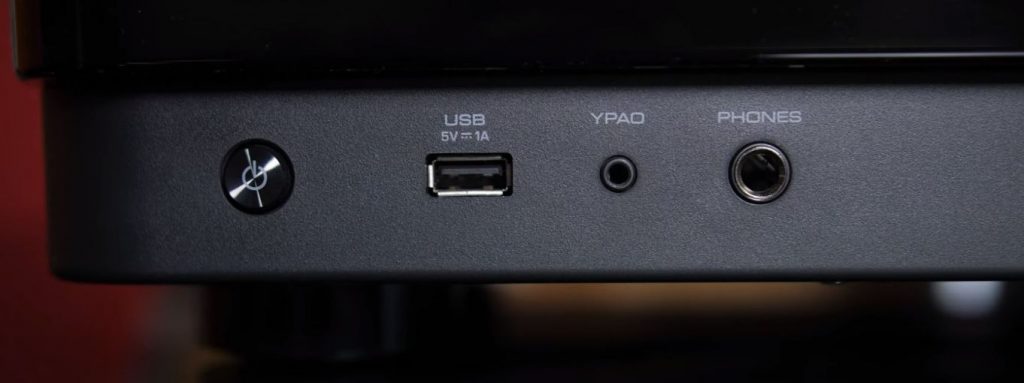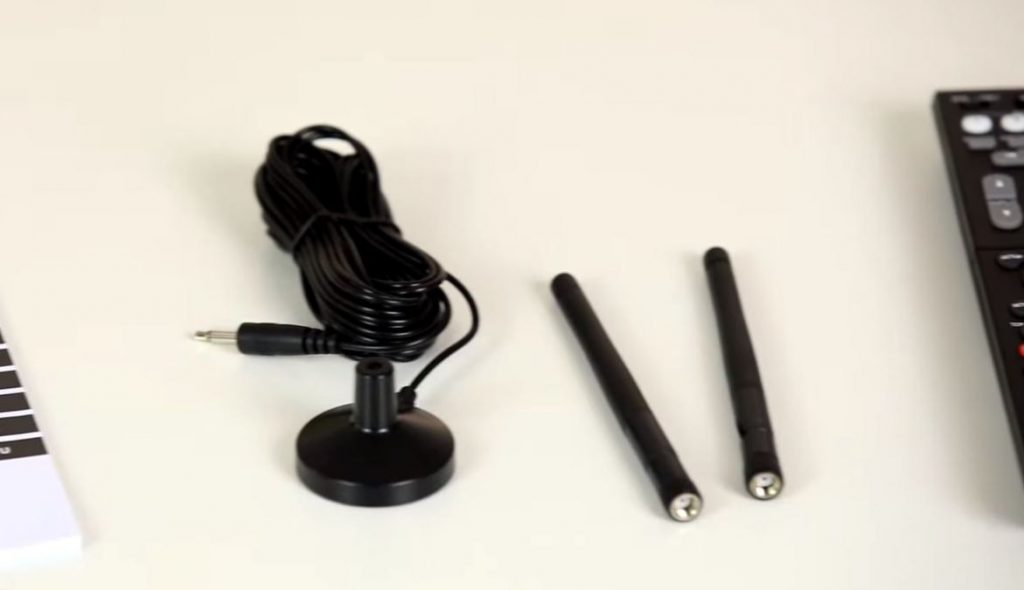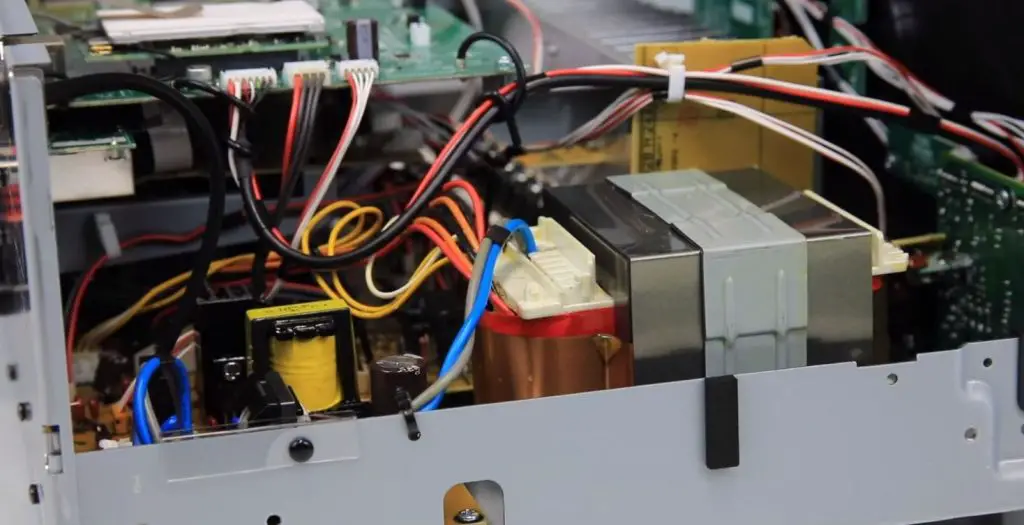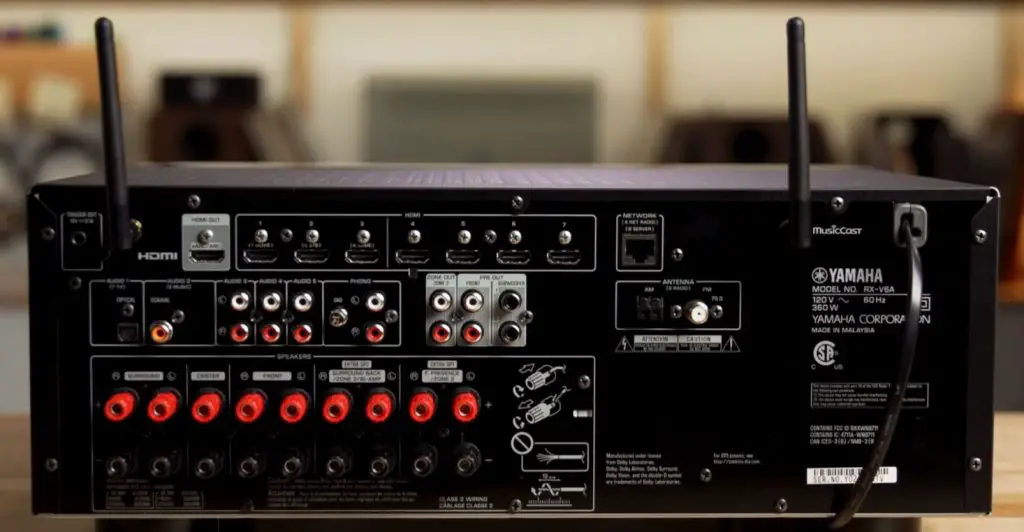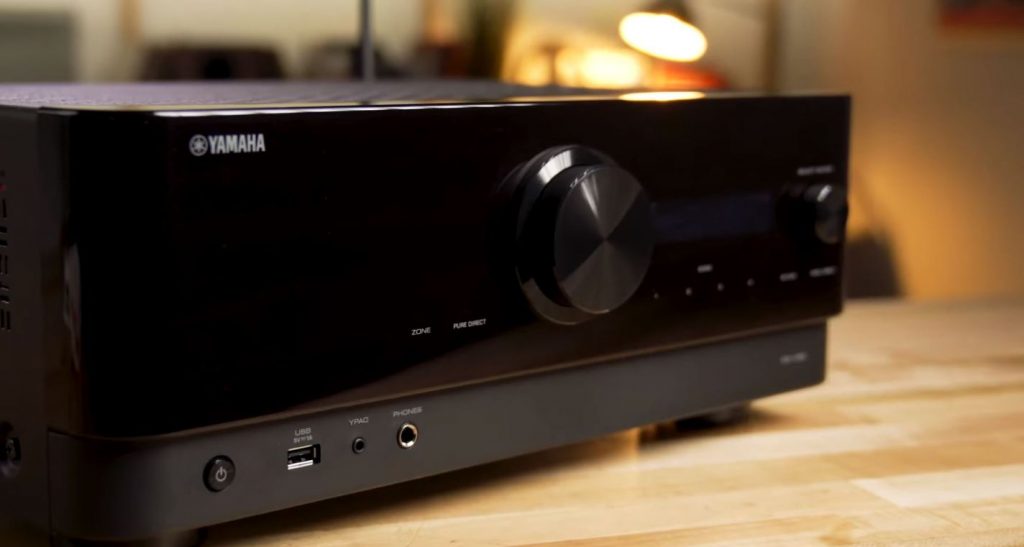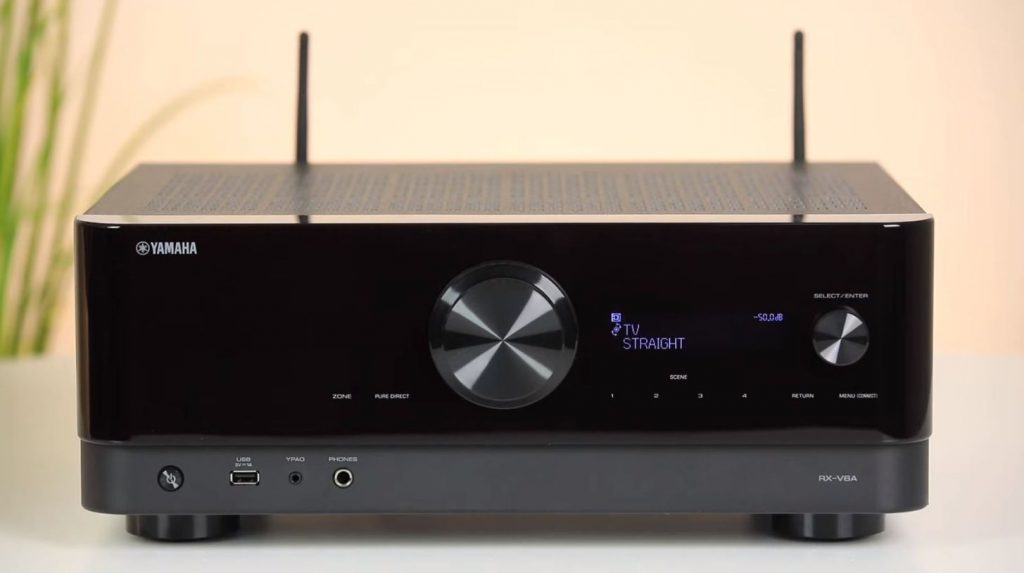Yamaha RX-V6A Review
Yamaha is a brand that has attracted much attention in the field of home theater. From their AV amplifier to headphones, they have managed to be a leader in the market for many years and have built a very professional user circle through their products. Yamaha RX-V6A can connect up to 7-channel speakers and two subwoofers. As long as the virtual sky channel function is used, a home theater system with excellent surround feeling can be created.
After the Yamaha has specially strengthened the sound quality, the RX-V6A can also sing outstanding sound performance. Therefore, even if it is used to listen to music, it has an excellent standard. In addition, RX-V6A can also be connected to various sources such as streaming, digital, and analog and can be used as the home’s audio-visual entertainment hub.
Yamaha RX-V6A is a 7.2-channel AV with built-in 100-watt amplification and supports all the functions you expect from an AV receiver at this price. Such as Dolby Atmos and D.T.S. :X, Dolby Surround and D.T.S. :X upmixing technology, as well as Yamaha’s proprietary virtual technology.
Yamaha’s YPAO RSC with multi-point auto-calibration system, high-resolution audio, USB and Bluetooth transmission, MusicCast and Airplay for online and multi-room audio 2, wireless rear speaker support, music enhancer, voice control, and new HDMI 2.1 ports and functions especially added for games, such as ALLM, V.R.R., Q.M.S., and QFT.
Design
Regarding the design of RX-V6A, I like the design Yamaha has made for their new products. The appearance is more modern, getting rid of the old style that looked outdated before.
The circular volume knob is almost wholly located on the front and has been repositioned in the middle. The display screen has also changed. It is an LCD, which is placed on the right side of the volume knob.
The second smaller knob is used to navigate the display screen and select input sources on the far right. On the left of the center knob, we found two small indicators, Zone and Pure Direct, and on its right, under the LCD, there are some touch controls. There are four buttons for SCENE selection, return, and menu.
There is a small part on the lower part of the front panel, which is a matte surface. The round button on the left is for the power supply, a USB port connecting external storage, a YPAO microphone input port, and the usual headphone jack. These redesigned AVs seem to cancel the previous analog stereo input. Same as seen in Yamaha RX-V4A.
Yamaha RX-V6A is equipped with a high-speed amplifier, which helps accurate signal transmission, and is especially suitable for high-resolution audio signals. Generally speaking, high-speed amplifiers will cause unstable signal transmission, but Yamaha’s new design circuit achieves high-speed and stable signal transmission. The amplifier also has 384 kHz / 32-bit BB PCM5102A DAC for all its audio conversion.
The Control
The remote control is the same as what we saw when we tested the RX-V4A, and to be honest, this is not new to us. The remote control is the usual remote control with plastic and rubber buttons. Generally speaking, there is nothing new, but it is obviously understandable in this price range.
The positions of the buttons are the same, only the switch on the top has a different name. It now stands for MAIN and Zone 2. Everything else is the same, you may need a while to get used to the position of the buttons, like any new remote control, but other than that, its practicality and functions are perfect. But there is no backlight function. So it will be more challenging to use it in the dark.
I like the new design adopted by Yamaha for its latest product release. However, although its looks and experience are very fresh, if there is one thing they need to improve, it is the remote control because it is not very coordinated with other parts of the design.
The Connections
When you look at the connections provided, we see that Yamaha has wholly changed their port layout and number and tends to use HDMI ports instead of all other traditional ports. As we mentioned earlier, it has a headphone jack, YPAO microphone port, and a USB for connecting external storage.
Unfortunately, what is missing here is the analog stereo input of the RX-V685. Although this is a minor omission, it is still a port. On the back of the RX-V6A are the speaker output and seven HDMI inputs on the top. What’s impressive about these new Yamaha amplifiers is that they offer more HDMI 2.1 inputs than all competing brands in 2020.
For example, Denon and Marantz only have one HDMI 2.1, but Yamaha RX-V6A gives three. For this price, it can be said to be shocking. There are also four HDMI 2.0 inputs and one HDMI output. Most mid-priced products have a single output, so this is not surprising.
The HDMI 2.1 port of Yamaha RX-V6A AV receiver brings a lot of features, including 4K ultra-high-definition video (including 4K/60, 50Hz 10/12bit), 3D video, A.R.C. (audio return channel), eARC (enhanced audio return channel), HDMI control (C.E.C.), automatic audio and picture synchronization, color depth, “xvColor”, high-definition audio playback, 21:9 aspect ratio, BT.2020 color measurement, HDR compatibility, Dolby Vision, H.L.G., HDR10+, ALLM, V.R.R., Q.M.S., and QFT.
Yamaha RX-V6A has no problems watching movies or playing games under 4K/60Hz and 4K/120Hz YCbCr 4:2:2 signals (32Gbps). This means that there is no problem using PS5. However, in a few cases where the power amplifier accepts 4K/120Hz RGB signals (8-bit, 10-bit, 12-bit), such as the signal from Xbox Series X, there will be problems at this time.
So the only solution is to connect your signal source device directly to the T.V., from eARC to the receiver. There are three analog stereo inputs, and one is dedicated to phono. One coaxial and one optical digital input, 2.2 channel pre-out, one zone 2 output, one 12V trigger output, one for wired connection to local Ethernet port of the network, and the usual DAB/FM and WiFi/Bluetooth antenna connectors.
The amplifier has built-in WiFi, supports 2.4 and 5GHz networks, and is also equipped with Bluetooth v4.2. This is the same as before, so there is no change here.
The YPAO APP
In some additional functions, the Yamaha RX-V6A AV receiver is very similar to RX-V4A, but we found some minor additions and improvements in the functions it provides. As always, the first thing we researched was the audio calibration system.
Yamaha uses the YPAO system, and like all similar systems, it can be adjusted according to the model. In RX-V6A, compared with the RX-V4A version, there are more upgraded versions. It is called YPAO R.S.C. with Multipoint.
YPAO will analyze the acoustics of your room, measure the characteristics of the speakers, and adjust the unwanted reflected sound to optimize every channel of your home theater. In addition, the R.S.C. (reflection control) function is responsible for correcting early reflections and providing effect normalization based on these reflections through cinema D.S.P. parameters.
Compared with the primary system, the result is more balanced, and it can improve the performance of Dolby Atmos and D.T.S. :X. The whole process is relatively easy. Just follow the instructions on the screen. Even if you don’t have much experience in similar calibration before, you can complete it without any difficulty.
Even if there are some problems with your settings, the YPAO system will prompt you with some information. These calibration systems generally provide pretty good operation, especially for those not familiar with manual adjustment. It can be a good helper.
Before doing this sound calibration, you need to follow the basic initial setup to connecting everything to the amplifier. If you have made some primary connections before, things here become very simple, there should be no problems, and it can be done quickly.
But even if there is any trouble, Yamaha has also created a setup guide application, which is an application that explicitly guides settings. You can install it on your mobile device, select the corresponding model, and follow the instructions to make the necessary cable connections. This app is free to download and can be used on iOS and Android devices.
The interface is straightforward and can guide you to connect the system to everything. This is a friendly little program, although not many people will use it. However, if you are a novice, you will find the convenience of this application.
The Voice Assitance and MusicCast
Yamaha promised to increase support for Amazon Alexa and Google Assistant. Still, if you want to use these, you also need to have an external device, such as an Echo Dot or Google Home device. It can also be controlled with Apple’s Siri voice through the Airplay 2 application on the mobile device. Now that we have mentioned Airplay 2, we should talk about this device’s streaming and multi-room features.
It supports MusicCast. With it, you can connect various devices that support MusicCast to the amplifier. This can be done through the MusicCast mobile app, which supports Android and iOS devices. On the other hand, if you are an Apple mobile phone user, the included Airplay 2 application allows you to connect various Airplay 2 devices to the device.
The Airplay 2 application can be downloaded from the Apple Store. The receiver also has some multi-room features, which are slightly enhanced compared to what we got in RX-V4A. For example, terminals surrounding the rear or front can be connected to speakers in another room to create a zone 2.
With Yamaha RX-V6A, if you want to place speakers in another room, you can choose the speaker configuration of 7.2 channel + 2 zone or 5.2.2 channel + 2 zone. But MusicCast and Airplay 2 can create a multi-room environment and play online streaming music through various streaming services.
Many of the most well-known platforms are available, such as Amazon Music, Spotify, Pandora, Napster, SiriusXM, Tidal, Deezer, Qobuz, and so on.
But streaming is not limited to its online services because you can also use a power amplifier to play audio from a N.A.S. server or network storage on the local network you are connected to. We have already mentioned its USB playback function above, so its Bluetooth support is the last thing that needs to be said. The device is equipped with Bluetooth v4.2, which can stream music to Bluetooth-enabled speakers or headphones.
Other Features
However, Yamaha RX-V6A has more features that should be mentioned. One is HDMI to HDMI 4K upscaling, if you prefer to do it with an amplifier instead of your T.V. Now, whether you should use this feature depends on the performance of your T.V., so we suggest you try both to determine which one is better.
There is also HDMI-CEC. You can use the T.V.’s remote control to control the power amplifier, thereby reducing the number of remote controls you use in your home theater. Suppose you want to drive the treble and bass of the front channel by using an independent power amplifier.
The bi-amp function is also supported, improving the acoustics and performance of the front sound field. Although this is a more advanced feature, there is not much value in such an AV receiver, but as an additional feature, it is always good to have it, and many home theater enthusiasts like it.
Finally, there is support for wireless speakers, including MusicCast 20 and MusicCast 50 surround speakers. In addition, there is a MusicCast SUB 100 subwoofer, which you can connect to. In this way, you are not bound by cables, and you can place speakers in your area at any time.
Yamaha RX-V6A AV receiver provides similar functions as RX-V4A. However, there are some slight improvements, such as a better YPAO system and better multi-zone functions. In addition, Yamaha has provided a fairly standard feature list for this mid-range AV amplifier, already available to most users. Enough.
Sound Performance
The device is a typical 7.2 channel model. It supports 7.2 channel audio settings, or if you want to use Dolby Atmos, it can support up to 5.2.2 channels. As usual, there is support for Dolby Atmos and D.T.S. :X, and of course, all older audio mixing, such as Dolby TrueHD, DTS-HD Master Audio, Dolby Digital Plus, Dolby Digital, and D.T.S.
One of the indispensables is upmixing technology, equipped with typical Dolby virtual surround sound and D.T.S. Neural:X is the standard configuration of these, which can upgrade low-version audio tracks, such as stereo mixing, to panoramic surround sound. In this part, like most mid-range products, it is equipped with Yamaha’s Cinema D.S.P. 3D, which is precisely the same as the version we found in RX-V4A and many of Yamaha’s mid-and low-end products. It is our version of RX-A1080 and above.
Upgraded version of HD3 version. Cinema D.S.P. 3D is a technology for creating natural stereo fields, such as movie theaters or concert halls. There are 17 different D.S.P. programs for you to choose from in RX-V6A. Simply put, this technology will process any audio signal it receives and enhance it in some way according to your choice.
This technique can create some cool effects, but as I always say, the result depends on the source of the film. Most of the time, the final result will deviate from the original intention of the producer. The sound is artificial and over-processed. As audio purists, we tend to avoid using it as much as possible, but it may not be possible that you will find it to your taste, so it is always good to try.
Cinema D.S.P. 3D can simulate various audio environments and is also responsible for the virtual functions of the device. First of all, through the virtual cinema D.S.P., the device can realize surround sound with only the front speakers connected. I also discovered Virtual Cinema Front.
This intelligent technology allows you to put surround speakers in the front and still get the surround sound information behind your listening position. If you can’t put the surround speakers in the back, this will send Usefully.
Virtual surround sounds rear speakers can achieve surround sound effects without using surround sound speakers at all. With Silent Cinema, you can enjoy surround sound and sound field effects using only headphones. Speaking of its internal amplifier, the device can output 100 watts per channel (8 ohms, 20 Hz-20 kHz, 0.06% 2ch drive), which is lower when used in a complete 5.2.2 or even 7.2 channel system.
In the film test, I chose a 5.1.2 channel system with a subwoofer and two height speakers placed in the front above the main speakers.
The movie we chose was “Godzilla vs Kong“, with its explosive Dolby Atmos track, available through the included Dolby Digital Enhanced Codec. In our opinion, this movie may not be high in terms of overall quality, but its colossal scale is beyond doubt when it comes to its technical merits.
A film of this kind implements a surround system that can depict all the frames of its magnificent works and present all the power, size, and weight of these monsters. Yamaha has done an excellent job in this regard.
The orbiting here is very active, with ballistic orbit, missiles, and fighter jets passing over our heads. When King Kong was transferred at sea and attacked by Godzilla, there was a lot of audio information in the rear, including underwater and surface effects, which pulled us into the plot. Equally impressive are the Atmos effects, although they are not as pronounced as close to the face as surround sound. Many times, the camera is placed on the ground.
To provide a vertical extension to the scene, the sky speaker does an excellent scale and vertical extension. This is subtle, but it is precisely what is needed to make the scene more believable and realistic.
However, if a piece makes you hold your seat, it is the low frequency and energy you will get from it. Every time I collided, I trembled in my seat as if King Kong and Godzilla were just outside our room to resolve their fight. But this is not just a question of how much low-frequency volume is output.
Its resolution and low-frequency clarity are obvious because it never feels distorted or out of control, even in the most intense scenes. The volume of the RX-V6A is high. I can’t let it reach its limit, so you don’t need to worry about this. If the maximum volume is impressive enough, it is equally remarkable that its output components do not have too much distortion. Yes, RX-V6A may not be suitable for large rooms, but it can do better for any medium-sized living room or home theater.
As for music, it not only supports the usual low-quality audio formats such as MP3, W.M.A. and A.A.C. By the way, they can all reach 320 kbps, but they can also be played back like FLAC (384/24 bit) and ALAC (96/24 bit). And high-resolution audio of WAV/AIFF (384/32 bit) files. D.S.D. supports up to 11.2 MHz.
It seems that Yamaha has improved the specifications of RX-V6A because the previous model can only keep FLAC and W.AV files up to 192kHz. In this test, as I usually do, I chose a few favorite songs in FLAC format and played them through the front USB port to get the best quality.
But, again, all Yamaha amplifiers performed well in music, and the Yamaha RX-V6A AV receiver proved why so many home theater enthusiasts favor Yamaha. The music stage in front of us is full of energy and vitality because Yamaha pushed the front channel to the limit.
The sound imaging is excellent, with good accuracy and impressive resolution, making it very easy to determine the instrument’s sound source and space. I didn’t feel anything missing from the power amplifier because most frequencies were reproduced well and accurately.
The mid-range has a sound output, which feels balanced, warm, and controllable, while the high-range is full of emotion without becoming too agitated. Bass has good volume, energy, and enough power. Even in the more demanding bass link, it will not feel overwhelming or exaggerated.
We experimented with different content, from rock, pop, jazz, and classical music to heavy metal, electronic and classical music. Although some types of amplifiers feel more comfortable than others, the consensus is that it is better for most music. They are all pretty good treatments. If you want an amplifier for movie entertainment and want to consider music, then this is a good choice.
RX-V6A proved to us why Yamaha’s products are so good. This may be a mid-range product, but it still reflects the value and quality of Yamaha in its products. This power amplifier also continues this trend.
Conclusion
Yamaha RX-V6A AV receiver is another star product launched by Yamaha. Yamaha RX-V6A is an excellent mid-range AV receiver equipped with everything needed for a mid-scale home theater system.
Overall, although this RX-V6A is in the entry-level price range, whether it is a virtual sky channel, high output power, sound quality enhancement, and other functions, it has the performance only available in higher-end equipment in the past.
Coupled with its arranged streaming, digital, analog, and vinyl sources, it is enough to make it an entertainment and audio-visual hub at home. It is very worthwhile for users with a limited budget or trying surround effects for the first time.
